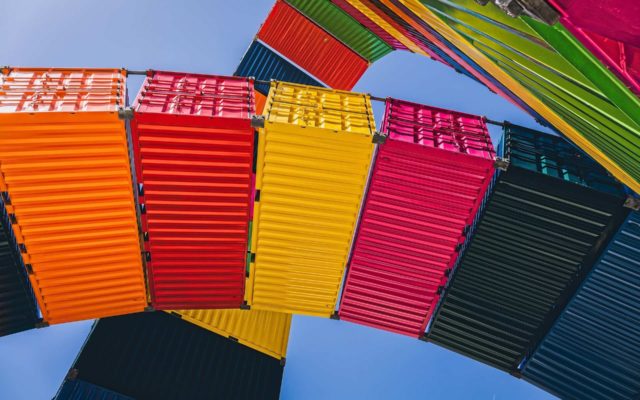Supply chain innovation: mastering the future
Big Data - 3D Printing - IoT - Blockchain
As technical innovations follow one another in rapid succession, we seek to determine for our customers the configurations that will enable them to benefit from these advances, without becoming dependent on solutions that become obsolete too quickly.
Big Data
Harnessing the power of Big Data
Big Data is nothing more and nothing less than the concentration of a vast amount of information, the exploitation of which is a source of enrichment for the Supply Chain in its design, management and execution components.
Enrich forecasting and planning processes by pooling data and taking into account new data relating to customer behavior. Enrichment of operations execution with, for example, the massive use of photography in dispute management.
Mastering and integrating the 4 Vs
The digitalization of companies poses 4 challenges:
- The volume of data to be processed
- The variety of information to include (photos, etc.)
- The veracity of the information provided
- The speed of information renewal.
We support our customers in their process of taking into account big data solutions to improve some of their activities.
3D printing
The 3D printer: a major upheaval in logistics flows?
3D technology enables delayed differentiation at the highest level, right up to the end consumer. Supply chains now only apply the Make-To-Order (MTO) principle, eliminating not only the risks associated with stock (shortages, obsolescence, etc.), but also the financial cost of these. Gone are the 300,000 references of spare parts managed by certain distributors, replaced by a good 3D printer and a database of parts to be produced… While this is partly true, the complexity of Supply Chain management puts this revolution into perspective.
Last-minute production, delayed differentiation, production to order, etc. are existing and proven concepts. What’s more, production cycle time is not the same as lead time (a few minutes of production…for lead times of several weeks).
Redesigning the logistics chain
If the arrival of 3D printers is a revolution in itself, it’s not the end of the Supply Chain, but rather its reorganization to move from a centralized production model to one favoring decentralized production. We organize :
- flow typology and identification of “printable” flows
- supply of printer consumables to production quality control
- maintenance of these mini-production lines
- industrial methods to guarantee the integrity of the production plan database
We size, manage and adapt to demand.
What supply chain model for 3D printers?
The studies we have carried out in various industrial environments reveal tried and tested models which will enable you to benefit from this innovation. Gains in flexibility, stock management and responsiveness are only real if the supply chain is able to guarantee the “instantaneous” and permanent production capacity of these printers, through careful planning of their use, supply and maintenance.
The Supply Chain enables the necessary product quality controls (particularly for automotive or aeronautical spare parts), as well as the conformity of the production plan to the part requested. On the other hand, in a BtoC environment, the 3D printer is a back-up tool for FMCG or FMCG spare parts, which do not require compliance with a standard, but only with a production plan. The supply chain then focuses on the supply of printer consumables, their exchange to ensure the permanent availability of this tool, and the provision of accessories to complement locally produced parts.
IOT
The opportunity of a continuous flow of information at the service of Big Data
The Internet of Things (IoT) connects objects that generate information in real time.
Whether it’s a transport vehicle (pallets, parcels, containers, trucks) or the objects themselves (tires, engines, pumps, refrigerators, etc.), the information made available provides a better understanding of usage, current travel status and current and future consumption.
This information enriches big data processes. It lies at the interface between operational and marketing information.
Our Supply Chain and Logistics consultants integrate this new, instantaneous source of information into their assignments, to enhance existing processes or create new ones.
The main processes affected are :
- Sales forecasts
- Sales & Operations Planning (S&OP)
- Inventory management
- Planning
- Transport plan
Blockchain
Blockchain: the new frontier
A digital technology, blockchain is an information storage and transmission technology that is transparent, secure and operates without a central control body Find out more at: blockchainfrance.net
The impact of blockchain on the supply chain
Supply Chain is a prime area for the use of blockchain. Combined with IoT and Big Data, it enables much more reactive and automated management of physical operations. It comes at just the right time, as Customs has entered a process of dematerialization and data exchange thanks to the Guichet Unique national du Dédouanement.
We support our customers in illuminating these new Supply Chain frontiers.
We operate in various sectors
Large groups, institutions, SMEs ; we have the resources to support companies of all sizes and in all circumstances (from long-term vision to crisis support)
Supply chain is becoming an integral part of industrial sites. Managing site supplies means working more closely with suppliers, and integrating factory workflows into the supply chain.
Our work focuses on issues relating to the organization and management of physical flows, as well as on forward-looking studies linked to territories. Our areas of expertise include urban logistics, modal shift and carbon footprint.



